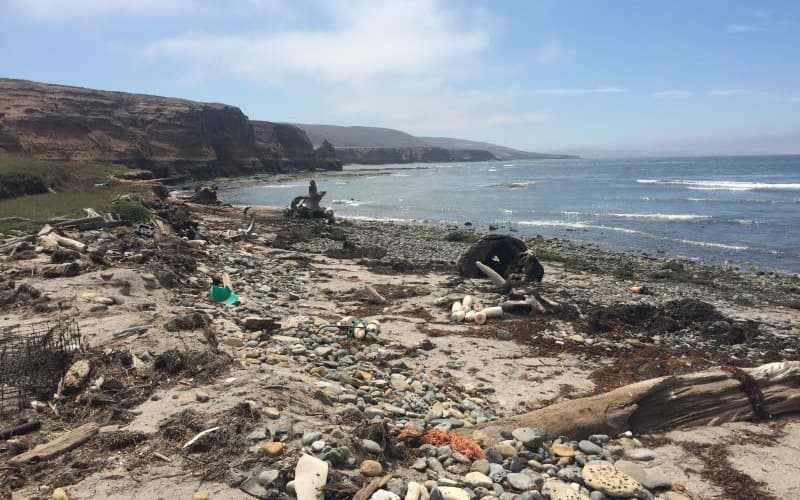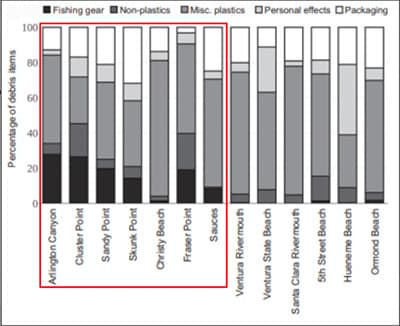Marine Debris
Conservation Issue

The rise in marine debris, including microplastics, is a growing concern among marine resource managers. Such debris can impact sanctuary resources via their widespread spatial distribution and long-lived presence in the water column. Marine debris can range in size from microplastics (<5 mm) to lost or abandoned fishing gear (e.g. monofilament line, "ghost nets," and lost pots). Thus debris can affect organisms across food webs, and influence the navigation of sanctuary waters by commercial and research vessels.
Description
Marine debris is defined as any persistent solid material that is anthropogenic in origin and intentionally or unintentionally disposed of in the marine environment. Marine debris can range in size from microscopic pieces of plastic to whole structures and objects, such as lost vessels and abandoned fishing gear. Microplastics typically originate from large plastic materials that have degraded from physical and chemical processes. Additionally, marine debris can be vectors for chemicals such as fire retardants to enter the food web. These chemicals may become biologically available as the plastics they are bound to degrade into smaller pieces. Often, marine debris enters waterways via terrestrial sources (e.g., storm events) and can circulate in ocean basins on time scales varying from years to millennia. Debris impacts to marine ecosystems can catalyze disruptions to ecosystem function, alterations to food web dynamics, entanglement of megafauna, smothering of sessile invertebrate communities, and physical abrasion by large objects. However, recent studies suggest that marine debris may impact living organisms in novel and cryptic ways. For example, plastics laden with typically biologically inert chemicals can be ingested by organisms at multiple trophic levels. By entering the food web, debris may be vectors for carcinogens for marine life and people. Given that Channel Islands National Marine Sanctuary (CINMS is an offshore site, the sources and extent of marine debris, and their impacts, differ greatly in comparison to mainland sites. Further, CINMS is located offshore from one of the most densely populated urban areas along the west coast of North America and therefore may be exposed to a greater volume and variety of marine debris compared to more remote sanctuaries. Indeed, marine debris may impact and alter natural and cultural resources at every scale within sanctuary waters and may pose yet-unknown threats to human health, economies, and ecosystem function.
Data and Analysis Needs
- Spatial and temporal data on the accumulation of marine debris throughout sanctuary waters (e.g., to mean high tide, the water column, the benthos)
- Threats posed by different classes of marine debris (e.g. microplastics (<5mm), consumer plastics, lost fishing gear, and abandoned/lost vessels)
- Emergent threats posed by marine debris at microscopic and macroscopic scales
- Predicted impacts to sanctuary resources over short (5–10 years), medium (10–50 years), and long (50–100 years) terms
- Supplementary and/or additional sampling to support ongoing projects (e.g., microplastic sampling in conjunction with Plumes and Blooms, a long term project monitoring the seasonal, inter-annual, and long-term variability of the Santa Barbara Channel water components.
Potential Products

- Marine debris database
- Static and interactive (e.g., WebCR) maps of marine debris sources (e.g., rivers and outflows), types, and locations
- A set training for the Channel Islands Naturalist Corps to conduct macro and microplastic identification with the public
- Prioritized list of marine debris datasets that can be used to develop education and outreach campaigns
Supplementary Information
Sanctuary Integrated Monitoring Network (SIMoN) Resources:
For more information about this assessment, contact research.CINMS@noaa.gov

